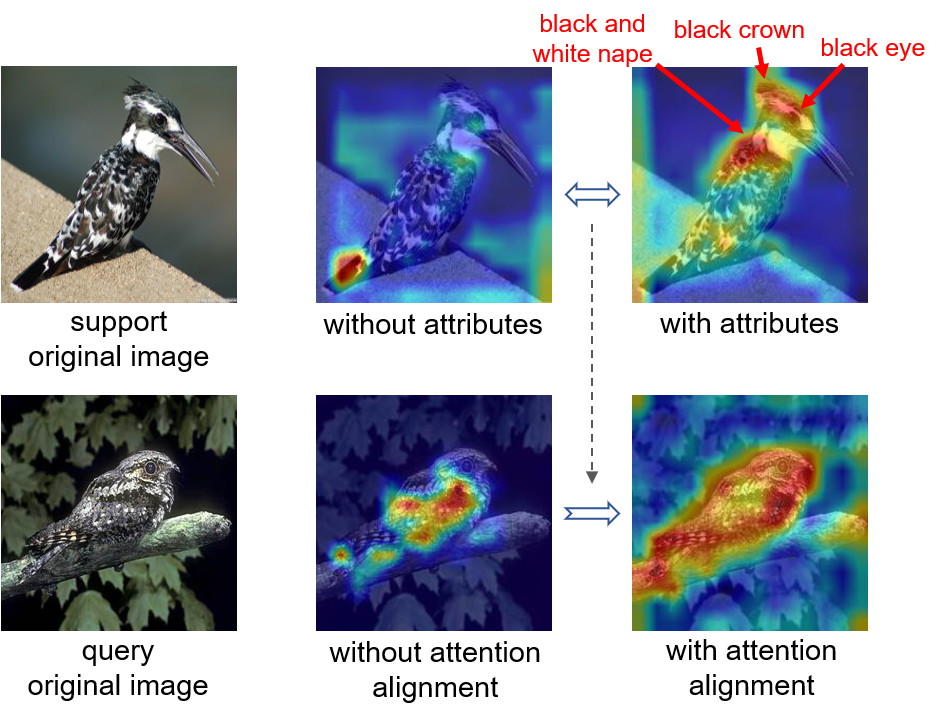Attributes-Guided and Pure-Visual Attention Alignment for Few-Shot Recognition
Published in Proceedings of the 35th AAAI Conference on Artificial Intelligence (AAAI 2021)

In this paper, we devise an attributes-guided attention module (AGAM) to utilize human-annotated attributes and learn more discriminative features for few-shot recognition. This plug-and-play module enables visual contents and corresponding attributes to collectively focus on important channels and regions for the support set. And the feature selection is also achieved for query set with only visual information while the attributes are not available. Therefore, representations from both sets are improved in a fine-grained manner. Moreover, an attention alignment mechanism is proposed to distill knowledge from the guidance of attributes to the pure-visual branch for samples without attributes. Extensive experiments and analysis show that our proposed module can significantly improve simple metric-based approaches to achieve state-of-the-art performance on different datasets and settings.
